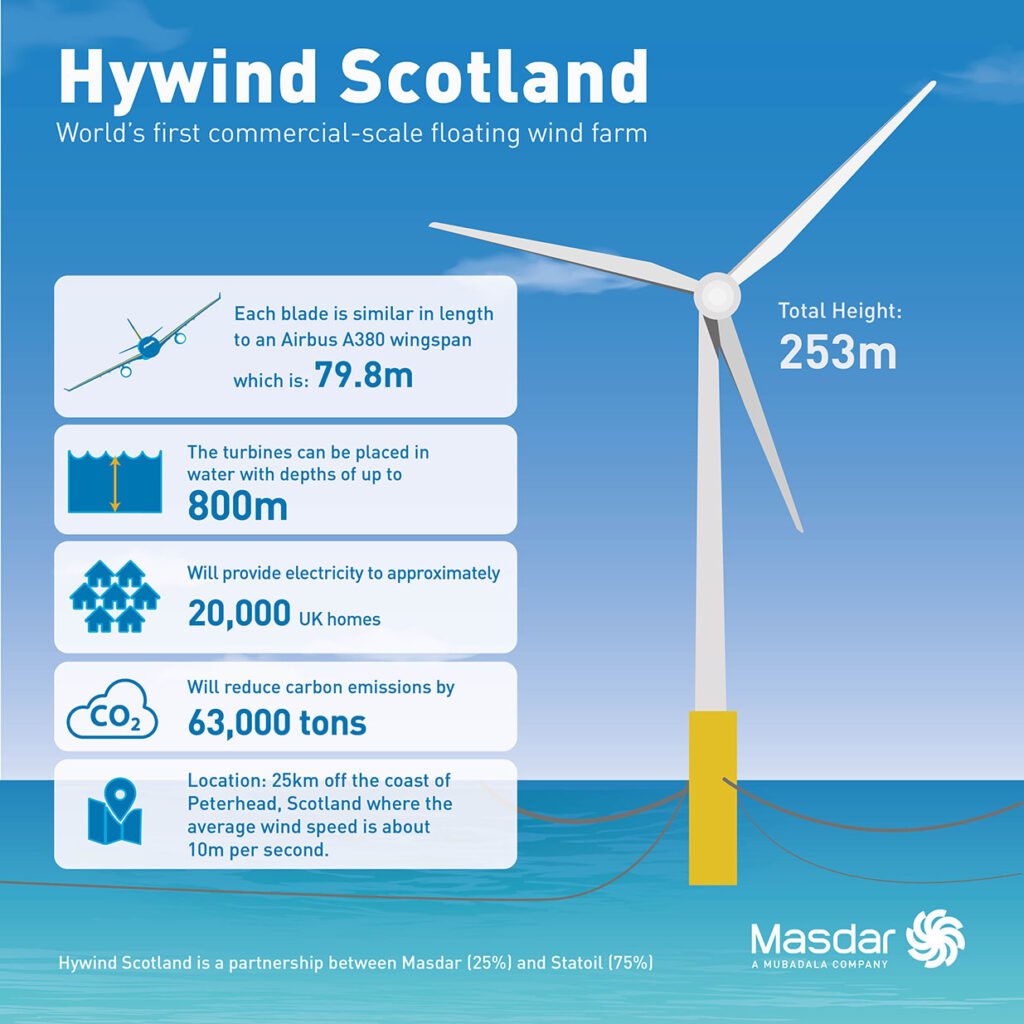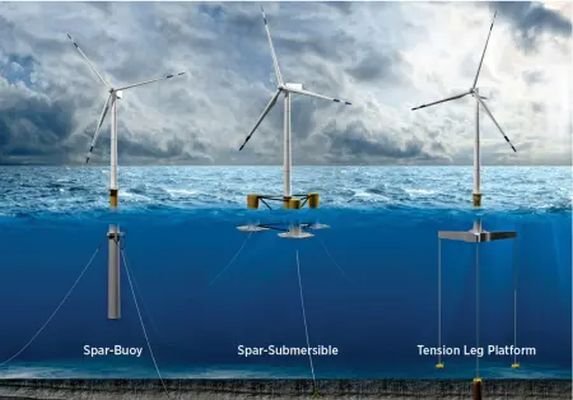Hywind Scotland, which generates enough electricity for more than 20,000 homes, is the first floating wind turbine array that floats on the sea’s surface rather than being dug into the ocean bed.
Proponents say the technology heralds a new generation of green energy.
The distant location of the five towering 574ft-tall (174m) turbines, 15 miles (24km) offshore, is just one novelty of this renewable energy project.

What’s groundbreaking about the Hywind project, located in more than 300ft (90m) of water, is that the giant masts and turbines sit in buoyant concrete-and-steel keels that enable them to stand upright on the water, much like a fishing buoy.
The turbines’ nearly 10,000-ton cylindrical bases are held in place with three taut mooring cables attached to anchors, which lie on the sea floor.
In contrast to ordinary offshore wind turbines, with long towers sunk into the seabed and bolted into place in shallow seas 60-160 ft (18-48.5m) deep.

The advantage of floating turbines is that they can access large swathes of outlying ocean waters, up to half a mile deep, where the world’s strongest and most consistent winds blow.
In Europe, where the density of onshore and near-shore wind turbines in places like Germany, the United Kingdom, and Norway has spurred increasing opposition to new arrays, the floating turbines can be installed over the horizon, out of sight of coastal residents.

However, some renewable energy experts remain sceptical that the high costs of floating offshore wind turbines will come down far enough to rival other clean-energy technologies.
Reference- BBC website story with inputs from Ecologic Institute, University of Rostock- (Germany), Equinor website, Wikipedia






